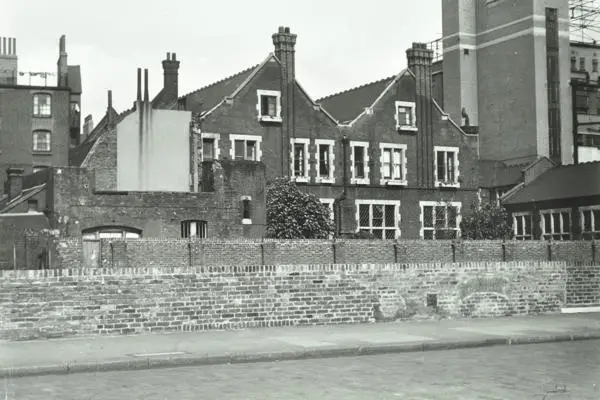Toynbee Hall archive catalogue
As part of a major regeneration of Toynbee Hall, the archive collection was transferred to London Metropolitan Archives (LMA) in 2015. Since then the 34 linear metres of material has been carefully sorted and catalogued funded by the National Lottery Heritage Fund and with the assistance of the Toynbee Hall Heritage staff and volunteers. The catalogue is now available online for consultation (reference LMA/4683). Sally Bevan tells more.
History
Toynbee Hall, a registered charity, is based in its original home at 28 Commercial Street, Whitechapel, London, in a listed Arts and Crafts inspired building designed by Elijah Hoole, built on the site of an old Industrial Boys School. It led the International Settlement Movement and developed from a collaboration between Oxbridge students, lecturers, prominent Victorian philanthropists and the Reverend Samuel and his wife Henrietta Barnett.

Considered the first University Settlement of East London, residential volunteers moved into the present site just before Christmas in 1884. Arnold Toynbee, lecturer and political historian, had worked hard to define the concept and bring about the building, but unfortunately died before it was realised, hence, at Henrietta Barnett’s instigation, its name.
Toynbee Hall’s stated aims as laid out in the first Annual Report are expressed as the 'alleviation of poverty via education, research and inclusive activity' promoting a 'non-denominational', and an 'A' political approach, uniting concerned individuals from 'all classes' of society. Over the last 130 years Toynbee Hall has had a great deal of social and political influence. A succession of Wardens, now known as Chief Executives, have led the organisation responding to the needs of both the immediate and wider communities, including internationally.
In pursuing its educational aims, Toynbee Hall held a variety of adult classes for local people. Richard Tawney a residential volunteer, worked with Albert Mansbridge to establish the Workers Education Association in the 1920's. Charles Booth, based in a small 'shed' at Toynbee Hall and supported by Samuel Barnett and Toynbee Hall residential volunteers, researched his 'Poverty Maps' there, detailing the social conditions of the late nineteenth century. Other notable residential volunteers, including Clement Attlee and William Beveridge, helped to bring about the National Insurance Act, the National Health Service and the huge nationalisation program of the post Second World War Labour Government. Over the years research based at Toynbee Hall has led to the increased professionalisation of teachers and social workers and the development of the Juvenile Courts system. Long-time Warden James Mallon was involved in ground-breaking research on the cost of living.
Always concerned with cultural activities, the Trustees of Toynbee Hall were initially surrounded by members of the Arts and Crafts movement including William Morris and supported residential volunteer Charles Ashbee's handicraft workshops. As an extension to the exhibitions of work held in the halls by artists like Edward Burne-Jones, the Whitechapel Gallery was begun by Samuel Barnett.
In the first wave of Citizens Advice Bureaus in 1939, Toynbee Hall had the largest. Since then Toynbee Hall has turned its attention from the support of the local Jewish community, many of whom had moved away, to the Bangladeshi community via its Asian studies department promoting literacy, money management, support for older Bengali people and women’s classes.
Currently, Toynbee Hall provides a continuance of the Free Legal Advice service set up in the 1880's, debt advice and money management. There are also frontline mentoring services for young people building on the legacy of the many activities promoting the welfare of young people that Toynbee Hall had developed, from the Children’s Country Holiday Fund to boys’ clubs, Guides, Scouts and pre-school playgroups. The current Wellbeing Centre provides a continuance of activities and a lunch club for older people.
Archive
The archive reflects the 136 year history of the charity, and includes many highlights such as:
- The records of the Toynbee Travellers’ Club overseas expeditions c.1890-1900 (LMA/4683/DEP/13)
- A large series of recorded oral histories, talks, ‘Social Policy Lunches’ and seminars by politicians, broadcasters, academics and former Wardens of Toynbee Hall (LMA/4683/SPE/09)
- A vast number of photographs documenting the staff, residents, events, services run by Toynbee Hall and of course, the building itself (LMA/4683/IMG).
Explore
- Find out more about the History of Toynbee Hall on The History of Toynbee Hall – A Timeline
- Start your journey to explore its history in more depth by consulting the archive catalogue on LMA’s online Collections Catalogue under reference LMA/4683
- As part of the project funded by the National Lottery Heritage Fund some of the archives have been digitised and can be viewed on the Explore Toynbee Hall website.